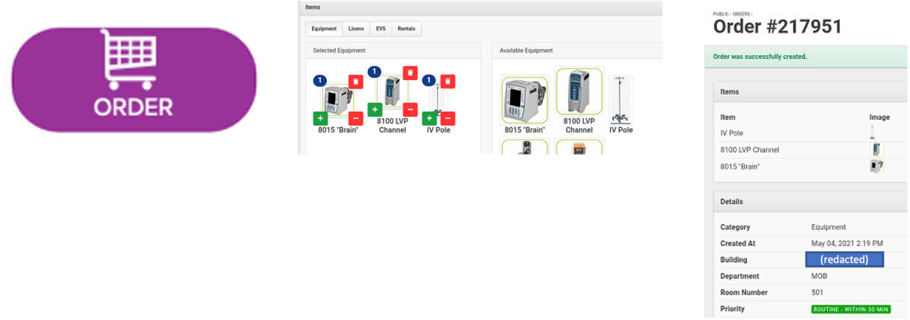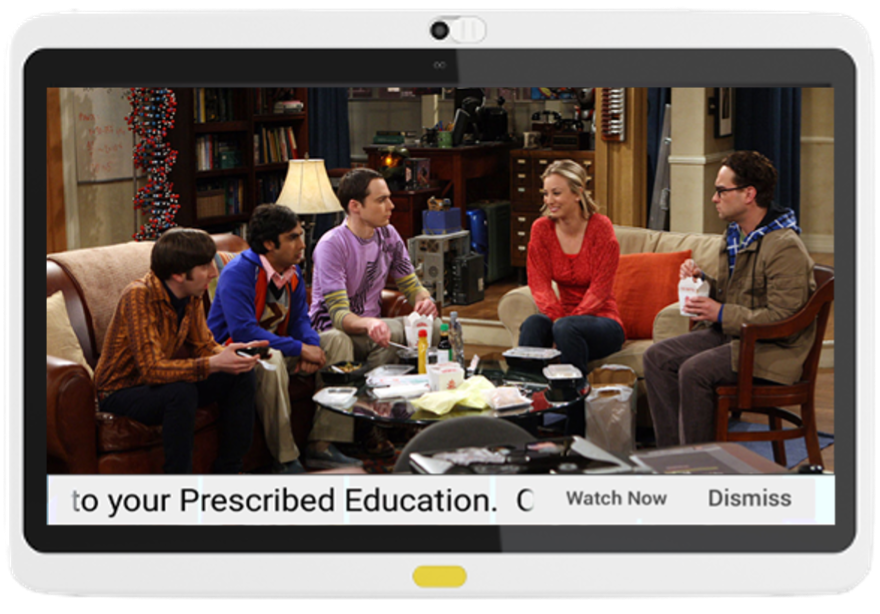If Nurses are hiding equipment, there's an inventory issue that needs to be addressed.
When it comes to obtaining patient equipment directly from patient rooms for immediate use, Nurses often find themselves with limited options. In their pursuit of providing optimal patient care, they are faced with a series of complicated processes and inter-departmental procedures to acquire the necessary equipment. The challenge lies in the urgency of their need for the equipment - it must be promptly delivered, clean, and readily available for immediate use. Unfortunately, internal supply chains often contribute to unnecessary delays in patient treatment and improvement.
In hospitals, frontline care clinicians and staff encounter operational failures, where information, supplies, or equipment essential for patient care are insufficient. These materials undergo a complex journey through multiple departments before reaching the patient. For instance, patient care equipment goes through various stages, including unloading from delivery trucks, storage, delivery to nursing units, usage, cleaning, and finally, being returned to service.
Nurses possess both the medical knowledge to assess the equipment needs of their patients and the responsibility of implementing the physician's plan of care. Consequently, they find themselves compensating for the support department's inability to accurately translate the physician's orders. This often leads to Nurses searching in real-time for the necessary equipment to fulfill an order, resorting to workarounds where they gather equipment that should have been provided by the support departments.
By recognizing that errors are often caused by system or process failures, it becomes crucial to adopt various process-improvement techniques to identify inefficiencies, ineffective care, and preventable errors. These techniques can then drive the necessary changes associated with the existing systems.
Fortunately, HCI and our partner, CenTrak®, offer a solution to address these challenges through the Support Terminal. This automated portal enables caregivers to order equipment or services, ensuring they have access to the patient equipment they need precisely when they need it. With a simple touch to the patient whiteboard and virtual keyboard in a patient room, caregivers no longer need to rely on time-consuming workarounds they may have developed over time. This eliminates the need for dangerous and inefficient practices, such as hiding equipment in ceiling tiles, which pose safety and infection risks.
The Support Terminal's "Order" option utilizes integrated software and a user-friendly interface to maintain a clean and readily available inventory of patient room equipment. Caregivers can easily select the required equipment and quantity from an image library, input their location information, and even specify the delivery time interval and urgency level. Once the order is placed, it automatically generates, and an acknowledgment is sent.
Moreover, the Support Terminal with the On-Demand Ordering option extends beyond patient equipment. Its 100% configurability and integration with existing systems allow for nonclinical service ordering, such as maintenance requests, PPE requests, and EVS requests. Additionally, it can be utilized to request other patient-related services, including chaplain services, laundry and linen services, and even scheduling pet therapy. Administrators can leverage the back-end reporting capabilities to monitor and report on inventory, scheduling, and productivity.
With on-demand equipment and service ordering, workarounds become obsolete, and nursing staff and care teams can dedicate more time to providing quality patient care and treatment. Equipment is delivered on time, every time, ensuring optimal efficiency and satisfaction among staff members.
Don't miss the opportunity to witness the ease and effectiveness of the Support Terminal. Schedule your virtual demo today and discover how it can enhance staff satisfaction, eliminate costly bureaucratic processes for your team, and most importantly, improve outcomes for your patients.
In hospitals, operational failures— missing information, supplies, or equipment necessary to complete one’s work tasks—can erode staff efficiency and contribute to staff burnout and medical errors. Despite the seriousness of their impact, the most common response to operational failures is to work around them without expending additional effort to prevent recurrence. In fact, studies have found that workarounds to operational failures consume around 10% of Nurses’ time — a significant amount given that Nurses account for one-fourth of hospitals’ budgets.”1
To address errors caused by system or process failures, it is crucial to embrace various process-improvement techniques that can identify inefficiencies, ineffective care, and preventable errors, ultimately leading to changes in the existing systems.
HCI and our partner, CenTrak®, offer the Support Terminal, an automated portal that allows caregivers to order equipment or services, ensuring they have the patient equipment they need precisely when they need it. By simply touching the patient whiteboard and virtual keyboard in a patient room, caregivers can eliminate the need for time-consuming workarounds they may have developed over time. For instance, some staff members have resorted to hiding IV pumps in ceiling tiles to have access to them whenever necessary, despite the safety and infection risks associated with such practices.
With the "Order" option in the HCI Support Terminal, caregivers can easily maintain a clean and readily available inventory of patient room equipment. They can select the required equipment and quantity from an image library, input their location information, and even specify the delivery time interval and urgency level. Once the order is placed, it automatically generates, and an acknowledgment is sent.
By simplifying the process of equipment ordering, caregivers can ensure that equipment is delivered in a timely manner, clean, serviced, and ready for immediate use. This eliminates the need for workarounds and allows nursing staff and care teams to dedicate more time to providing quality patient care and treatment.
To witness the ease and effectiveness of the Support Terminal, schedule your virtual demo today. Discover how this solution can enhance staff satisfaction, eliminate costly bureaucratic processes, and, most importantly, improve outcomes for patients.

The versatility of the Support Terminal with the On-Demand Ordering option extends far beyond patient equipment. With its 100% configurability and seamless integration with existing systems, it also provides the convenience of nonclinical service ordering. From maintenance requests to PPE and EVS requests, the Support Terminal streamlines the process. It even allows for the ordering of other patient-related services such as chaplain services, laundry and linen services, and the scheduling of pet therapy. Administrators can take advantage of the comprehensive back-end reporting capabilities to effectively monitor and report on inventory, scheduling, and productivity.
By embracing on-demand equipment and service ordering, healthcare professionals can finally bid farewell to workarounds and instead focus their valuable time and energy on delivering quality patient care and treatment. With equipment delivered promptly and consistently, efficiency and satisfaction among staff members are guaranteed.
Don't miss out on the opportunity to witness the seamless functionality and effectiveness of the Support Terminal. Schedule your virtual demo today and discover how this innovative solution can enhance staff satisfaction, eliminate cumbersome bureaucratic processes, and, most importantly, improve outcomes for your patients.
1 Tucker AL, Heisler WS, Janisse LD. Designed for workarounds: a qualitative study of the causes of operational failures in hospitals. Perm J. 2014;18(3):33-41. doi:10.7812/TPP/13-141
Share this
You May Also Like





